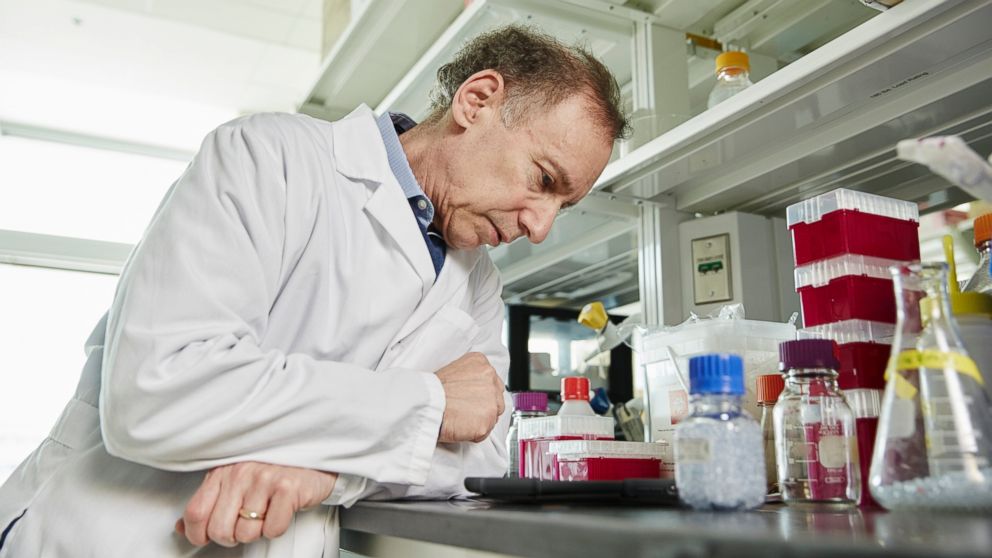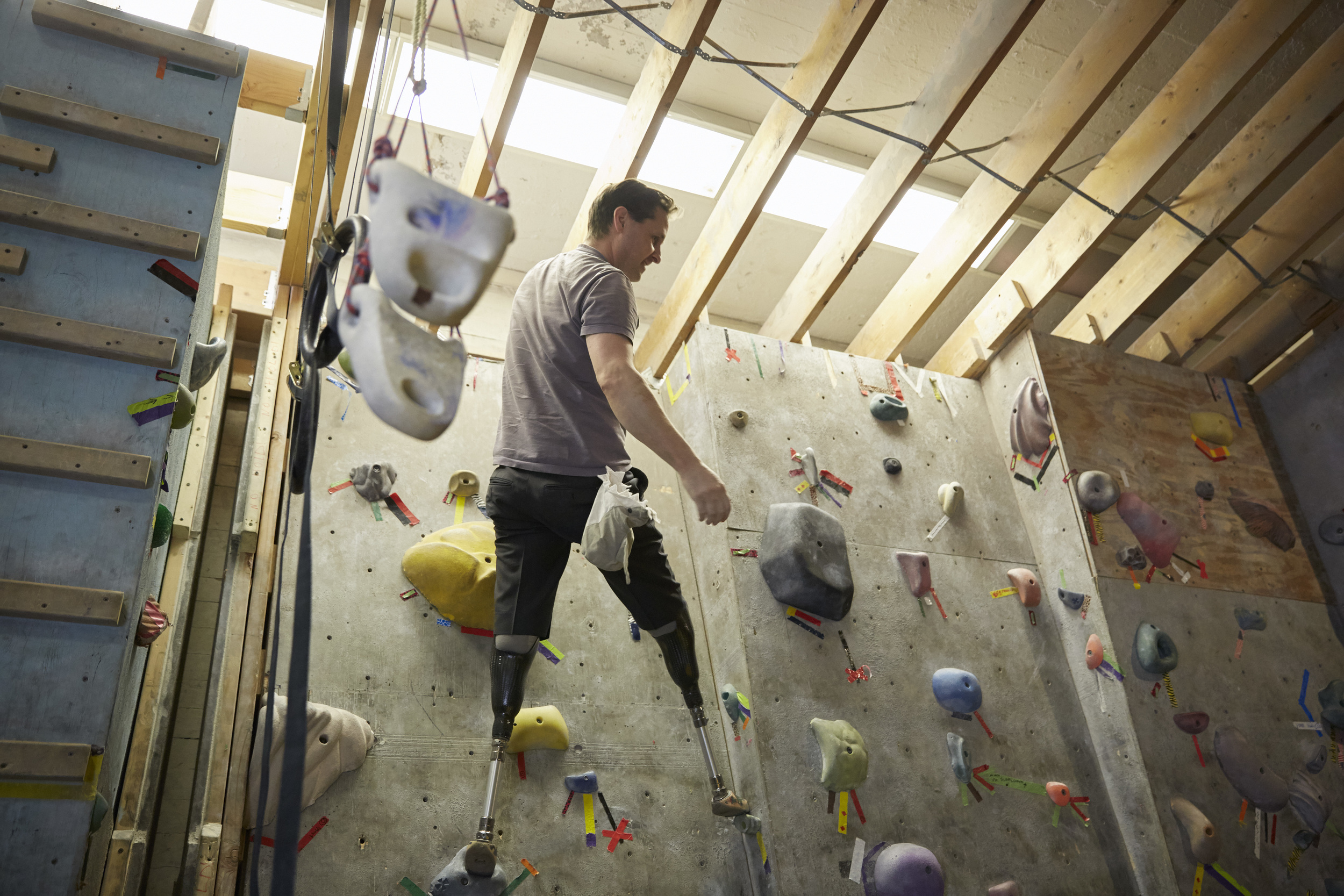Top 15 Finalists for 2016 Invention Awards Announced
Finalists include an implantable artificial heart and faster Wi-Fi.

— -- Finalists in the areas of biochemistry, communications, nutrition and medical technology have been selected by the European Patent Office, a public international organization, for this year's European Inventor Award.
Hailing from 13 countries, the 15 finalists were selected by an independent international jury. Four hundred individuals applied.
Members of the public are now invited to nominate an inventor, and winners from each category will be announced at an award ceremony in Lisbon on June 9.
Here are this year's 15 finalists:
1. Gluten substitutes from corn:
"Italian scientists Virna Cerne, Ombretta Polenghi and their team at Dr. Schär SPA in Italy are at the forefront of gluten-free baked goods development, producing an array of pastas and baked goods that allow people with gluten intolerance to enjoy a versatile diet without compromising their dietary restrictions. The unique selling point of the company's food products is the quality of the dough used to make them," according to the EPO.
2. Magnetic particle imaging for medical diagnostics:
"The invention of a new medical diagnostic method known as magnetic particle imaging by German physicists Bernhard Gleich and Jürgen Weizenecker at Philips Research Laboratory in Hamburg promises to enable doctors to obtain instant, three-dimensional images of soft tissue complications, including cancers and vascular diseases," according to the EPO.

3. Secure smart-card encryption:
"Joan Daemen, Pierre-Yvan Liardet and their team of Belgian and French cryptographers pioneered double-key smart-card encryption, a process for making smart-card networks more secure, by encrypting master cards with a security algorithm that ensures they can never be used to clone or gain access to recipient cards at a later time," according to the EPO.
4. Treatment for Parkinson's disease:
"The invention by French neurosurgeon and physicist Alim-Louis Benabid of high-frequency deep brain stimulation for Parkinson's disease and other neurological conditions has allowed patients around the world to resume functional and fulfilling lives without the need for radical surgeries. The treatment is administered via an electric probe permanently implanted inside the brain, similar to a pacemaker for cardiovascular complications," according to the EPO.
5. Paper-based microchips:
"The invention of paper-based transistors by Portuguese scientist Elvira Fortunato and Rodrigo Martins at the New University of Lisbon offers a cost-saving and energy-efficient alternative to silicon chips. Applications in daily life include biosensors, 'smart' product packaging, networked shipping labels and animated billboards," according to the EPO.
6. Rolling fluid turbine:
"A novel hydropower turbine invented by Czech civil engineer Miroslav Sedlácek at the Czech Technical University in Prague unlocks potential for electricity generation from waterways with low velocity such as brooks and small streams, thereby opening up a wide range of previously unexplored sources of sustainable energy," according to the EPO.
7. Ammonia storage to reduce NOx:
8. Ultrasound to safely measure brain pressure:
"The invention of two devices for measuring intracranial pressure and blood flow by Lithuanian scientist Arminas Ragauskas enables fast and safe diagnosis of traumatic brain injury, strokes, glaucoma and brain tumours. Ragauskas' novel measuring devices are important tools for treating intracranial injuries, which are among the world's deadliest killers," according to the EPO.
9. Diagnostic kits for developing countries:
"The invention from researcher Helen Lee at the University of Cambridge is an instant blood diagnostic kit developed for resource-poor regions of the globe, allowing for on-the-spot detection of infectious diseases such as HIV, hepatitis B and chlamydia. Administered as a simple blood plasma test, the invention delivers results within a matter of minutes - requiring no trained personnel or clinical infrastructure - while also monitoring levels of viral load in the blood," according to the EPO.
10. Targeted anti-cancer:
"American chemical engineer Robert Langer from the Massachusetts Institute of Technology (MIT) has pioneered a new therapeutic approach to fighting cancer by encapsulating anti-cancer drugs within biodegradable plastics. As angiogenesis inhibitors lose their efficacy when injected into the blood stream, Langer took a different approach. He coated the drugs with wafer-shaped "bio plastics", implanted at the actual tumour site, ensuring the drugs release their payload with maximum impact," according to the EPO.
11. Faster wireless technology:
"Indian-American inventor Arogyaswami Paulraj and a team of researchers at Stanford University are the pioneers behind MIMO, a novel idea that dramatically improves the performance of cellular networks and wireless modems. The innovation enables higher rates of data transmission for digital LTE and Wi-Fi, and significantly expands signal coverage," according to the EPO.
12. Biomechatronic leg joints:
"The invention of "bionic" knee and ankle prostheses by American biophysicist Hugh Herr at the Massachusetts Institute of Technology (MIT) enables amputees to walk with a fluid, natural gait thanks to a combination of microprocessors and adaptive impact dampening based on posture and weight distribution. Results were achieved by mimicking the knee's adaptive response to pressure and weight through a magnetic dampening liquid, activated by feedback from sensors placed inside the prosthesis," according to the EPO.
13. Helping newborn babies breathe: